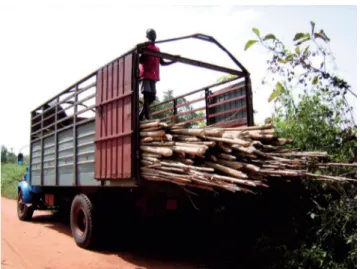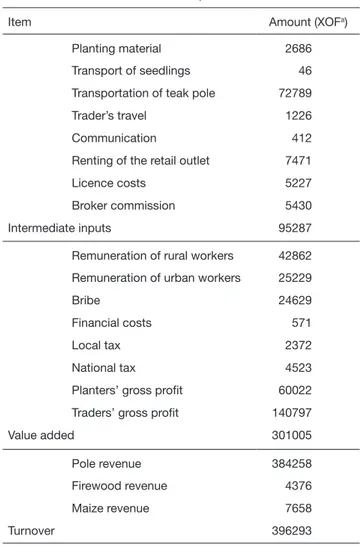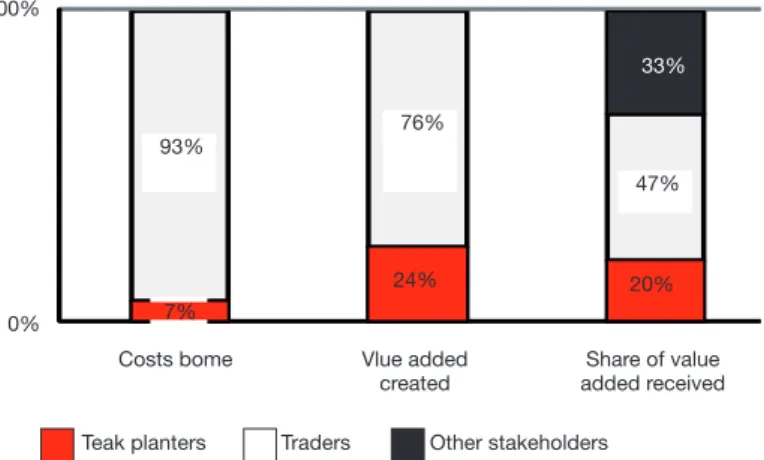Value added and equity in the smallholder-produced teak (Tectona grandis L.f.) poles value chain in Southern Benin
Texte intégral
Figure



Documents relatifs
Wind damages Lack of equipment Lack of credit Lack of technical supports Lack of conservation technologies (incl.processing) Theft of mangoes on orchards Lack of buyers
We performed two sets of experiments. The first set related to OCSP-Stapling support in web browsers. We checked if the OCSP Stapling and Must Staple approaches were
Data was collected in Excel models and then transposed into the Agri- Food Value Chain Analysis (AFA) software. Social analysis explores whether the beef value chain is
• Examining the BoS, including the management plan drawn up by the GI collective organization, making comments and giving their approval before it is transmitted to NOIP by the
The Tchorogo plantations of Ivorian origin (PI) differ from others, based on their lower natural durability, while trees from Koto exhibited higher growth characteristics..
In Benin and Mali, men and women have different access and control of productive resources (land, agricultural inputs, labor, and agricultural credit).. However, the process
The study reveals that, oil palm smallholding value chain is made up of three categories of farmers: family farms, rural and urban investors.. The average margins of farmers are
Based on diverse methods used to analyze animal chain in Europe, Brazil (Bonaudo et al., 2011) and in West-Africa (Bastianelli, 2001; Djamen, 2008), semi- structured